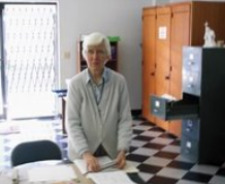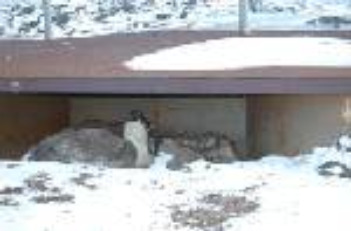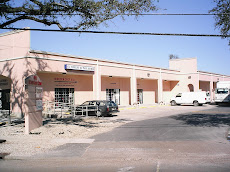
Our pen pal in the USAP John Miller sent us this photo from South Pole Station; the full official name of the United States base at the Pole is Amundsen-Scott South Pole Station.
Roald Amundsen, a Norwegian explorer, was the first human to reach the South Pole. He and his team, which made the trek to Antarctica in 1911-12, stayed in a portable tent there and left a note indicating, for whom ever came later, that Amundsen was there first. The English explorer Scott and his team came later, found the tent, reached the Pole, but died of starvation and the extreme cold on the return trip.
That tent remained at the South Pole since 1912. The tent is still there somewhere in the South Pole vicinity, but it is hidden under the ice. The tent in the photo is an exact replica of Amundsen's tent which is in the care of the USAP. If you look closely at this photo which John Miller sent us, you can see the actual pyramid-shaped tent.
One of our students, Jennie Gorden, was reading about this tent and Amundsen today in school and was fascinated by them. Some of the USAP crew, including John Miller, might attempt to spend a night in the replica of Amundsen's tent to re-create history soon. John promised to update us about this event should it occur.
Also of note in the photo is that the sun is beginning to rise. It rises once per year at the South Pole, and that process takes a long time. The sun never rises high on the horizon but always low. This begins the Antarctic "summer" which is our wintertime. There are only two seasons in Antarctica, as I was told by one of our pen pals -- cold and colder. The Winter is colder, the summer is cold. So, soon the sun will rise, and it will merely be cold at the South Pole.
Also of note, the square building in the photo behind the tent is a weather station for NOAA -- National Oceanographic and Atmospheric Administration.
NOAA, like NASA, often works in conjunction with South Pole Station.
Also of note, the square building in the photo behind the tent is a weather station for NOAA -- National Oceanographic and Atmospheric Administration.
NOAA, like NASA, often works in conjunction with South Pole Station.
-- Adrian





















No comments:
Post a Comment